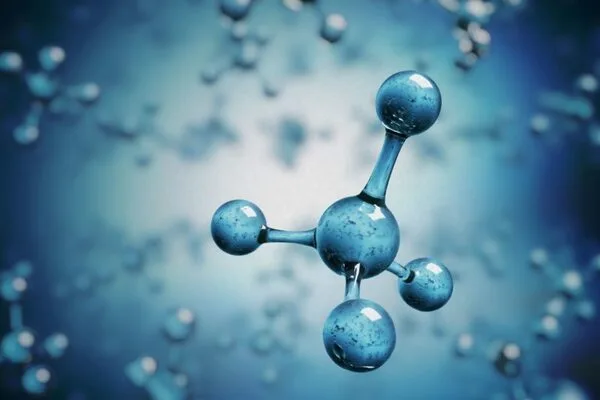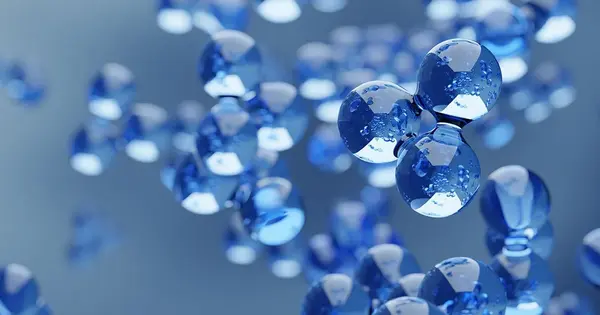Electrolysis is a promising method for producing carbon-free hydrogen from renewable and nuclear resources. The process of splitting water into hydrogen and oxygen using electricity is known as electrolysis. This reaction takes place in a device known as an electrolyzer.
Researchers made a coincidental scientific discovery that has the potential to revolutionize the way water is broken down to release hydrogen gas, which is essential in many industrial processes. The researchers discovered that light can activate a new mechanism in a catalytic material commonly used in water electrolysis, which breaks water down into hydrogen and oxygen. As a result, a more energy-efficient method of obtaining hydrogen has been developed.
A team of researchers from the National University of Singapore (NUS) have made a serendipitous scientific discovery that could potentially revolutionize the way water is broken down to release hydrogen gas – an element crucial to many industrial processes.
The team, led by Associate Professor Xue Jun Min, Dr. Wang Xiaopeng, and Dr. Vincent Lee Wee Siang from the Department of Materials Science and Engineering under the NUS College of Design and Engineering (NUS CDE), found that light can trigger a new mechanism in a catalytic material used extensively in water electrolysis, where water is broken down into hydrogen and oxygen. The result is a more energy-efficient method of obtaining hydrogen.
We discovered that the redox center for electro-catalytic reactions is switched between metal and oxygen by light. This significantly improves the efficiency of water electrolysis.
Xue Jun Min
This breakthrough was made in collaboration with Dr. Xi Shibo of the Agency for Science, Technology, and Research (A*STAR) Institute of Sustainability for Chemicals, Energy, and Environment, Dr. Yu Zhigen of the A*STAR Institute of High-Performance Computing, and Dr. Wang Hao of the NUS CDE Department of Mechanical Engineering.
“We discovered that the redox center for electro-catalytic reactions is switched between metal and oxygen by light,” Assoc Prof Xue explained. “This significantly improves the efficiency of water electrolysis.”
The new discovery has the potential to open up new and more efficient industrial methods of producing hydrogen, bringing this environmentally friendly fuel source within reach of more people and industries.

The accidental breakthrough
Under normal circumstances, Assoc Prof Xue and his team would not have made such a significant discovery. However, an unintentional power outage of his laboratory’s ceiling lights nearly three years ago enabled them to observe something that the rest of the world’s scientific community has yet to do.
The ceiling lights in Assoc Prof Xue’s research lab were usually left on for 24 hours at a time back then. The lights went out one night in 2019 due to a power outage. When the researchers returned the next day, they discovered that the performance of a nickel oxyhydroxide-based material in the water electrolysis experiment, which had been carried out in the dark, had deteriorated dramatically.
“This drop in performance, nobody has ever noticed it before, because no one has ever done the experiment in the dark,” said Assoc Prof Xue. “Also, the literature says that such a material shouldn’t be sensitive to light; light should not have any effect on its properties.”
The electro-catalytic mechanism in water electrolysis is a very well-researched topic, while nickel-based material is a very common catalytic material. Hence, in order to establish that they were on the verge of discovering something groundbreaking, Assoc Prof Xue and his team embarked on numerous repeated experiments. They dug deeper into the mechanics behind such a phenomenon. They even repeated the experiment outside of Singapore to ensure that their findings were consistent.
Three years on, Assoc Prof Xue and his team were finally able to share their findings publicly in a paper.
Next steps
With their findings, the team is now developing a new method for improving industrial processes that generate hydrogen. Assoc Prof Xue proposes making the water-containing cells transparent in order to introduce light into the water-splitting process.
“This should require less energy in the electrolysis process, and it should be much easier to use natural light,” Assoc Prof Xue explained. “More hydrogen can be produced in less time and with less energy consumed.”
Food manufacturers use hydrogen gas to convert unsaturated oils and fats into saturated ones, resulting in margarine and butter. Because hydrogen can generate a high temperature of 4,000 degrees Celsius, it is also used to weld metals together. The petroleum industry uses gas to remove sulphur content from oil.
Furthermore, hydrogen has the potential to be used as a fuel. Long hailed as a sustainable fuel, hydrogen fuel emits no emissions when it reacts with oxygen – no ignition is required, making it a cleaner and greener fuel source. It is also easier to store than solar-powered batteries, making it more reliable.
Assoc Prof Xue is pleased that the findings of his research team will aid in scientific discovery. He believes that the best way to advance science is to constantly push the boundaries rather than finding new ways to do what has already been done.
“We can only gradually improve society by accumulating new knowledge,” Assoc Prof Xue said.





